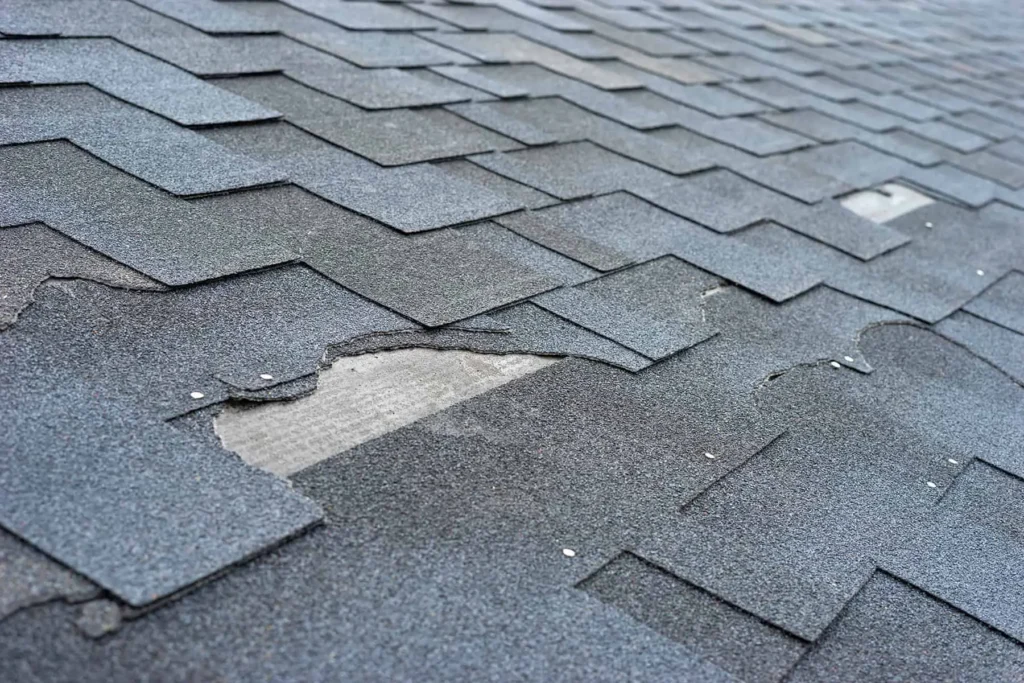Roof lifespan ranges from 15 to over 100 years based on material, installation, climate, and upkeep. Asphalt lasts 15–50 years, metal 40–100+, tile/slate 50–100+, and flat roofs 15–30. Quality install and regular maintenance extend durability. Roofs over 15 years old should be inspected.
What is the average lifespan of a roof?
The typical roof lasts between 15 and 100+ years, depending on the material, installation, climate, and maintenance level.
The roofing material is the single most influential factor, but longevity also hinges on:
- Professional installation: A well-installed roof can last 25–30% longer than one done poorly.
- Proper attic ventilation: Prevents heat buildup and condensation.
- Local climate: Roofs in hot, humid, or storm-prone areas degrade faster.
- Routine maintenance: Inspections and timely repairs can extend life by 5–10 years.
If your roof is over 15 years old, schedule a roof inspection to assess its condition and estimate remaining lifespan.
How long do asphalt shingle roofs last?
Asphalt shingles remain the most widely used roofing material in the U.S., chosen for affordability, ease of installation, and availability. Their lifespan varies by type.
Three-tab asphalt shingles
Three-tab shingles last 15 to 20 years. They’re lightweight and flat, making them less durable under extreme weather conditions. Over time, they’re prone to:
- Curling edges
- Granule loss
- Shingle blow-off during high winds
Architectural asphalt shingles
Architectural shingles last 30 to 50 years. These laminated shingles are thicker and more impact-resistant, making them better suited for areas with hail or high wind.
Both types should be monitored for:
- Bald patches
- Lifting or buckling
- Discoloration
For a longer-lasting option, consider upgrading through asphalt shingle roof installation.
How long do metal roofs last?
Metal roofs can last between 40 and 100+ years, depending on the type of metal, coating quality, and thickness.
Steel and aluminum roofing
These materials typically last 40 to 70 years. They’re resistant to fire, wind, and corrosion. Most residential metal systems come with:
- Galvanized or galvalume coating
- Reflective finishes for UV resistance
- High wind resistance ratings
Copper and zinc roofing
Copper and zinc can last over 100 years. They develop a natural patina that protects them from corrosion and eliminates the need for repainting.
Additional benefits:
- Non-combustible
- Recyclable
- Energy-efficient surface
To install one of these systems, consult a qualified metal roof installation contractor.
How long do tile, slate, and wood roofs last?
These classic materials offer superior aesthetics and longevity, provided structural support and maintenance are in place.
Wood shingles and shakes
Wood roofing lasts 20 to 30 years, though high-end cedar can go beyond 40 years with regular sealing.
Maintenance required:
- Cleaning debris
- Applying preservatives
- Replacing cracked shingles
Slate roofing
Slate roofs last 75 to 100+ years. Natural stone makes them impervious to fire, pests, and water. However, their weight demands reinforced trusses.
Clay and concrete tiles
Tile roofing lasts 50 years or more. Clay resists salt corrosion and is ideal for coastal homes, while concrete offers more color and design options.
Tile roofs should be inspected during roof replacement assessments to confirm framing support.
How long do flat and rubber roofs last?
Flat roofing systems typically last 15 to 30 years, depending on the membrane used and maintenance consistency.
EPDM (rubber roofing)
EPDM membranes last 25 to 30 years. They’re easy to install and work well in varying temperatures.
Advantages:
- UV resistance
- Low installation cost
- Flexibility during thermal expansion
TPO and PVC membranes
TPO and PVC systems last 15 to 25 years. They’re heat-welded for tight seams and often used in flat roofing and single-ply roofing projects.
What affects how long your roof lasts?
Installation quality
Incorrect flashing or nail placement leads to leaks and material failure. Roofs installed by certified professionals often exceed their expected lifespan by 20% or more.
Material quality
Premium shingles, coated metal, and thick membranes all last longer than economy-grade options. Manufacturer warranties usually reflect this.
Ventilation
Without attic ventilation, trapped heat causes shingle blistering and accelerates underlayment deterioration. Systems like loft ventilation improve airflow and extend roof life.
Climate conditions
- Snow and ice cause freeze-thaw cracking.
- Sun and heat degrade materials via UV damage.
- Wind and hail dislodge shingles and dent metal.
Maintenance
Regular cleaning and inspections along with timely residential roof repair can prevent small issues from becoming replacements.
How to know when your roof needs replacement
Age
If your roof is beyond its material’s expected lifespan, replacement may be more cost-effective than continued repairs.
Physical damage
Watch for:
- Sagging sections
- Cracked tiles or curling shingles
- Exposed underlayment
- Rust on metal panels
Interior issues
- Stains on ceilings or walls
- Attic moisture or mildew smells
- Dripping during heavy rain
These are signs water is penetrating your roof system.
Storm aftermath
Severe weather often leads to leaks or damage. After any major storm, have your roof checked by a storm damage and restoration expert to prevent hidden issues.
Frequently Asked Questions
How long should a roof last before replacement?
Most roofs last 20 to 50 years, depending on the material. Metal, slate, and tile systems last the longest, while asphalt offers 15 to 30 years of protection.
How long does a metal roof last compared to shingles?
Metal roofs last 40–70 years, while asphalt shingles last 15–50 years, depending on type. Metal is also more resistant to fire, hail, and UV exposure.
Can a roof last 100 years?
Yes. Slate, clay tile, and copper roofs can last over 100 years when properly installed and maintained. These options are ideal for homeowners planning for multi-generational property value.
Roof material and color don’t just affect lifespan they also influence energy use. According to the U.S. Department of Energy, reflective roofing surfaces can reduce roof temperature by up to 50°F, which decreases thermal stress and prolongs material life.

